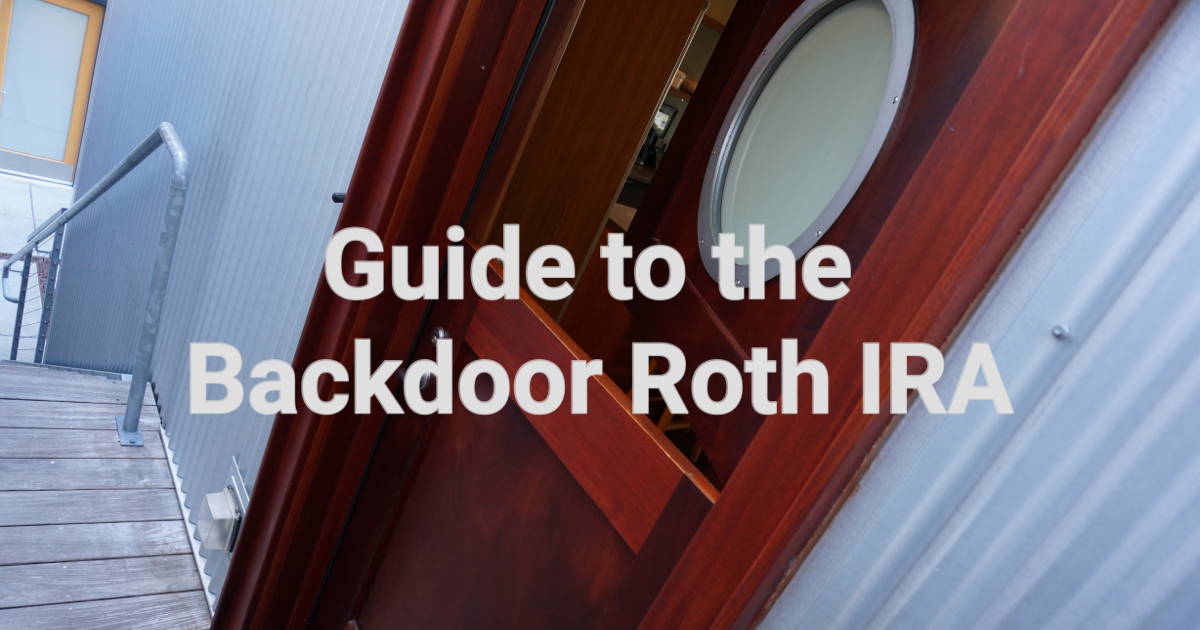
What if you are above the income limits to contribute to a Roth IRA? Ugh, right? Mo' money, mo' problems. You can't even get a tax deduction if you contribute to a traditional IRA! Fret not, for all is not lost. You CAN get a Roth IRA, and it's called the Backdoor Roth IRA.
Sound shady? Sure it does, but I assure you it is totally legit, and I will show you how to do it. The reason this is possible is because there is no income limit for converting a traditional IRA into a Roth IRA. Once this "loophole" is terminated, then you will be sad you didn't do it when you had the chance. I should suggest you only do this if you do not qualify to contribute to a Roth IRA because you exceed the income threshold, otherwise you are just unnecessarily adding steps and possibly taxation).
What Are The Income Limits to Qualifying to Contribute to a Roth IRA?
Conveniently (I guess?), the income limits to qualify for contributions to a Roth IRA are the same as qualifying for tax deductions in a traditional IRA. Basically, it would seem that you are out of luck either way for a traditional IRA or a Roth IRA. However, despite not qualifying for a tax-deductible traditional IRA, you can still make contributions to a traditional IRA that is NOT tax deductible. This is also referred to as a non-deductible traditional IRA. This is an important step in creating your backdoor Roth IRA, which I guide you through below.
Before diving in, please read all of the steps, because there is a caveat if you have any money in a tax-deferred traditional IRA.
Step-by-Step Guide to Creating a Backdoor Roth IRA
- Make your maximum contribution into a traditional IRA. You may have to create a new traditional IRA account if you do not already have one. I have one just for this purpose, and for most of the year the account balance is $0. For 2017, the full contribution is $5,500 ($6,500 if over 50 years old). This is a non-deductible contribution if you are above the income limits. You are allowed to make a contribution to an IRA up until April 15 of the following year).
- Wait until your transaction clears your bank account. This might take 2-5 days.
- Roll over the entire amount into a Roth IRA (it can be an existing Roth IRA). You will get a warning that this is a TAXABLE event. This would be a taxable event if you are converting tax-deferred money into a Roth. However, in step 1 we noted that this is a non-deductible contribution, meaning you have already paid all taxes on it. Thus, it is a tax-free conversion***
- File a Form 8606 when filing season comes. If you do your taxes yourself using tax software, I know H&R Block software will include these automatically when you specify that you had contributed to a Traditional IRA and then rolled it into a Roth IRA. The fact that it is built into the software lets you know it is legit and commonly done!
- Repeat every year that your income limits are above the threshold to contribute to a Roth IRA.
*** Tax Caveat
If you already have tax-deferred money in a traditional IRA, then the taxes get tricky. I will illustrate this with the following example:
Say you have $16,500 combined in one or more tax-deferred traditional IRAs.
You then make a non-deductible contribution of $5,500 to a traditional IRA. This means 75% of your traditional IRA is tax-deferred and 25% is non-deductible, per below:
$16,500 (75%)
$5,500 (25%)
You then want to rollover the $5,500 you just contributed into a Roth IRA.
BUT WAIT!
You cannot specify that you want to rollover just the non-deductible portion. The conversion will be proportional to the amounts you have as non-deductible and tax-deferred.So in this example, your entire traditional IRA portfolio is 25% non-deductible. When you convert any amount to a Roth IRA, only 25% of it will not be taxed, while the other 75% will be taxed.
Continuing our example:
By rolling over $5,500 to a Roth IRA, you now owe taxes on 75% of it, or $4,125. This is quite the opposite of what our goals were!
The remaining balance on your traditional IRAs become $16,500, of which $4,125 is non-deductible and $12,375 is tax-deferred. You will encounter the same problem every year so long as you keep non-deductible and tax-deferred balances in your traditional IRA.
How do you get around this?
Roll over the entire amount of your traditional IRA (while you are in a low tax bracket) to a Roth IRA.You will pay the entire tax bill on the conversion this year, but never have to worry about this nonsense again.
If you are a medical student or a resident and have money in a traditional IRA, you should think ahead and convert your traditional IRA to a Roth IRA while you are in a low tax bracket.

